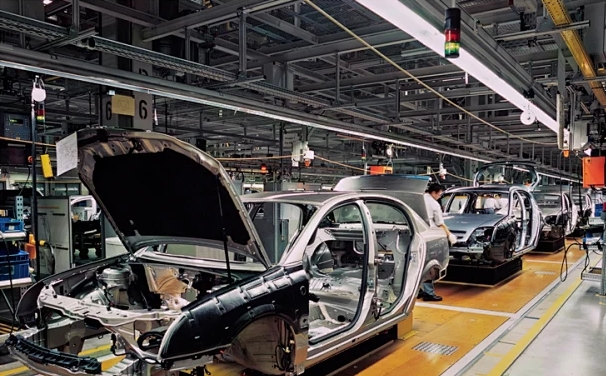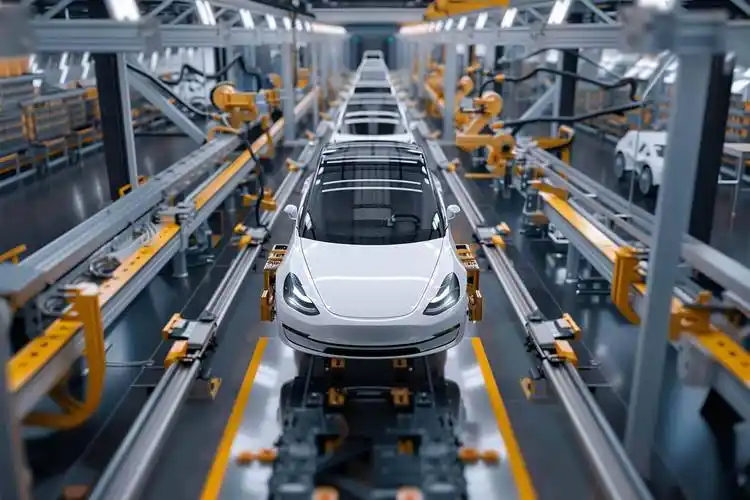Development Trends in the Automotive Wiring Harness Industry | Kaweei Insights
1、 Overview of the Development of the Automotive Wire Harness Industry
The combination of positive factors from both supply and demand sides is driving stable growth in the automotive wiring harness market
Automotive wiring harness is a key carrier for energy transmission and various signal transmission in automobiles, and is an indispensable system level component in the entire vehicle. Under the trend of electric intelligence, in recent years, automotive wiring harnesses have benefited from a combination of positive factors on both the supply and demand sides, ushering in a golden period of stable growth.
On the demand side, the consumer market's demand for advanced features in automobiles continues to grow. For example, safe driving has given rise to the demand for active safety systems such as automatic emergency braking, blind spot detection, and forward collision warning systems. Comfortable driving has given rise to the demand for additional driving functions such as voice recognition systems, ambient lighting systems, and heated seats. The implementation of these functional requirements relies on the operation of electronic components, which require wiring harnesses to ensure the transmission of signals, data, and electrical energy, thus forming an important driving force for the rapid development of the automotive wiring harness industry.
On the supply side, the trend of the "new four modernizations" of automobiles (referring to electrification, networking, intelligence, and sharing) has led the industry's development direction. The functions of automotive electronics and electrical appliances continue to increase, and the electronic and electrical architecture continues to iterate. The rapid development of the supply side of the industry is expected to release the development space of automotive wiring harnesses.
There are differences in the development trend of the segmented market for automotive wiring harnesses
Thanks to its widespread use in fuel vehicles for many years, the low-voltage wiring harness market has developed into a relatively stable stock market. Low voltage wiring harness products are diverse and mostly customized, requiring different wiring designs according to different vehicle models and different parts inside the car. The stacking wire material is relatively soft.
High voltage wiring harnesses are a pure incremental market driven by the trend of electrification, characterized by high voltage/high current, large wire diameter, etc., which determine the challenges faced in wiring, shielding, cost, safety, and other aspects in actual production and application processes. They have higher requirements than low-voltage wiring harnesses in terms of raw material materials, production processes, product design, performance levels, etc.
Industry concentration is high, and the process of domestic substitution is accelerating
The development of the automotive wiring harness industry is highly dependent on the automotive industry, and most branded vehicle manufacturers have mature and stable automotive supporting systems. For a long time, the high standard requirements for components have made the cooperation between wire harness suppliers and vehicle manufacturers relatively stable. At present, the global wire harness market is mainly dominated by Japanese manufacturers Yazaki and Sumitomo Electric, as well as European and American manufacturers such as Lenny, Anbofu, and Lier, forming an oligopolistic competition pattern. In 2021, the top three companies in the global automotive wiring harness industry had a combined market share of 71%, while the top five companies had a combined market share of 82%, indicating high industry concentration.
Thanks to the improvement of synchronous development and independent research and development capabilities, combined with cost advantages and localized service advantages, China's local wire harness enterprises have gradually entered the supporting system of domestic and foreign automobile manufacturers, especially in the new energy vehicle wire harness market, forming a relatively obvious breakthrough in domestic substitution.
In recent years, local wire harness suppliers have taken the lead in entering their supply system and gained a first mover advantage through good supporting relationships with independent new energy manufacturers. Some high-quality suppliers have successfully achieved technological breakthroughs in the design and development of high-voltage assembly wire harnesses, and have also formed significant advantages in the price and gross profit of wire harnesses. With the rapid development of local new energy vehicle brands, they have quickly seized market share and promoted the acceleration of domestic substitution of automotive wire harnesses.

2、 Global Market size of automotive wiring harness industry
The global automotive wiring harness industry market is steadily growing.
Automotive wiring harness is the network backbone of automotive circuits, connecting central control components with automotive control units, electrical and electronic execution units, and electrical components to form a complete automotive electrical control system. Automotive wiring harness products belong to customized products, and different vehicle manufacturers and their models have different design schemes and quality standards. Meanwhile, compared to gasoline vehicles, the circuit system of new energy vehicles is more complex, which not only increases the performance requirements for wiring harnesses and connectors, but also increases the demand.
Against the backdrop of vigorously developing new energy vehicles in various countries around the world, major automobile manufacturers continue to increase their investment in new energy vehicles. The production of new energy vehicles in various countries around the world is steadily increasing, with China's production of new energy vehicles increasing the most rapidly. According to QY Research's analysis, the global automotive wiring harness market is expected to reach approximately 357.4 billion yuan in 2022 and 574.4 billion yuan in 2029, with a compound annual growth rate (CAGR) of 6.6% from 2023 to 2029.
The development space of China's automotive wiring harness industry is vast
As the world's largest automobile producer, China's automobile wiring harness market has steadily grown in size with the steady increase in automobile production and sales in recent years. According to the "Research on Development Trends and Investment Prospects Analysis Report of China's Automotive High Voltage Wiring Harness Industry (2023-2030)", the total market size of China's automobile wiring harness has increased from 67.05 billion yuan to 81.46 billion yuan from 2016 to 2022.
3、 Development trend of automotive wiring harness industry
Developing towards high-voltage transmission and high-frequency high-speed transmission
In recent years, with the popularization of high-voltage electric platforms derived from the electrification of automobiles, as well as the application of a series of functional modules such as intelligent cockpit, vehicle networking, and intelligent driving driven by intelligence, there has been a strong iterative demand for automotive wiring harnesses in terms of energy transmission power and signal transmission rate. Relying solely on low-voltage wiring harnesses widely used under the original fuel vehicle system cannot help achieve all electrical functions of the entire vehicle.
In terms of energy transmission, based on low-voltage wiring harnesses, the structural design and manufacturing processes of key components such as connectors and cables are greatly adjusted to improve the ability to transmit high-power electrical energy; In terms of signal transmission, high-frequency and high-speed transmission is achieved through the optimization of the automotive bus topology structure and the development of special components such as high-speed data connectors.
Developing towards lightweight direction
Against the backdrop of increasingly stringent global environmental standards, vehicle manufacturers are vigorously promoting lightweighting in automobile production to reduce fuel consumption and improve the range of new energy vehicles. According to the energy-saving economic and technological analysis results of the China Association of Automobile Manufacturers, a 10% reduction in the weight of gasoline vehicles can lead to a 5% -8% reduction in energy consumption, while a 10% reduction in the weight of new energy vehicles can increase the corresponding range by 5% -10%, saving 15% -20% of battery costs and 20% of daily wear and tear costs.
Due to the fact that automotive wiring harnesses are mostly made of copper alloy wires, accounting for about 5% of the total vehicle weight, and are the third most important component in the application of fuel vehicles after engines and chassis, the lightweighting of automotive wiring harnesses has become a key breakthrough area in the current industry. In the future, with the increasing demand for vehicle lightweighting, wire harness enterprises with deep technical reserves and mature lightweight solutions are expected to stand out in the new wave of development and establish sufficient competitive advantages.
The production of automotive wiring harnesses is moving towards automation
Due to the complex wiring structure of automobiles and the fact that intelligent manufacturing has not yet popularized the entire process of wire harness production, the dependence on manual labor in production and assembly is relatively high, which to some extent limits manufacturers from expanding production capacity. At present, most automobile wire harness production enterprises can rely on some advanced equipment to complete the wire opening, crimping, and pre installation processes. However, the final process still requires a large amount of manual input due to different product requirements, process standards, and operating procedures.
In the future, as automotive wiring harnesses move towards integration, automated production is expected to run through the entire process of wiring harness design, production, logistics, and management. By seeking standardization in customization, the automation level will continue to be improved to fully unleash the production capacity potential of manufacturing enterprises.

4、 Technical level and characteristics of the automotive wiring harness industry
The technical indicators of automotive wiring harnesses mainly include mechanical, electrical, and environmental resistance characteristics. Mechanical characteristics mainly refer to technical requirements such as installation size, insertion and extraction force, mechanical impact and vibration; Electrical characteristics mainly refer to circuit current carrying, signal transmission, electromagnetic interference, circuit protection, etc; Environmental resistance refers to the requirements for high and low temperature resistance, wear resistance, corrosion resistance, noise resistance, and other aspects.
Automotive wiring harness is mainly used to connect the battery, distribution box, actuator, controller, sensor and other components of the car, providing electrical energy and signal transmission for the vehicle's electrical and electronic components, and providing basic connections for the control circuit to achieve all electrical functions. Electrical safety and signal accuracy have extremely high requirements for the stability of wire harness connections, ensuring that the circuit does not experience overload, short circuit, open circuit, voltage fluctuations, and signal transmission attenuation. When designing and manufacturing automotive wiring harnesses, in addition to ensuring their safety and reliability, stable signal transmission, and precise electrical function control, it is also required to consider reasonable wire diameters and materials in the design scheme, combined with optimal installation design, so that the wiring harness occupies less space, reduces its own weight, and optimizes the cost of the wiring harness while ensuring various performance.
At present, there is still a certain gap between domestic wire harness enterprises and mature foreign enterprises in the field of mid to high end car models, and their independent research and development and technological innovation capabilities need to be further improved. But with years of independent development and accumulated experience in supporting the automotive wiring harness industry in China, product quality has become more reliable and service levels have become more perfect. A small number of large-scale wiring harness enterprises with synchronous development and design capabilities have been cultivated in the industry.
Recent Posts
2025-04-16 11:04:36
What is a wire-to-board connector?
2025-04-16 09:20:46
How to choose House Electrical Wiring?
2025-04-15 09:27:05


